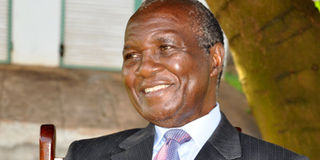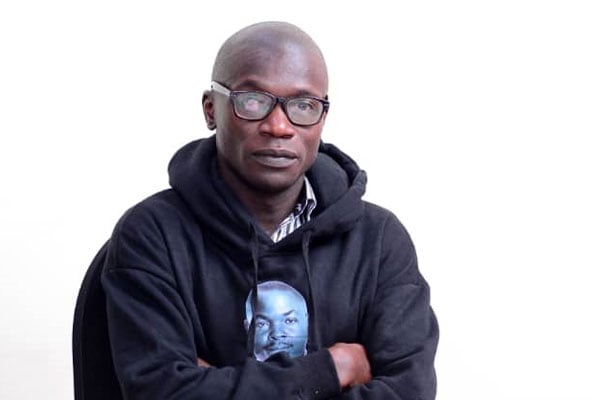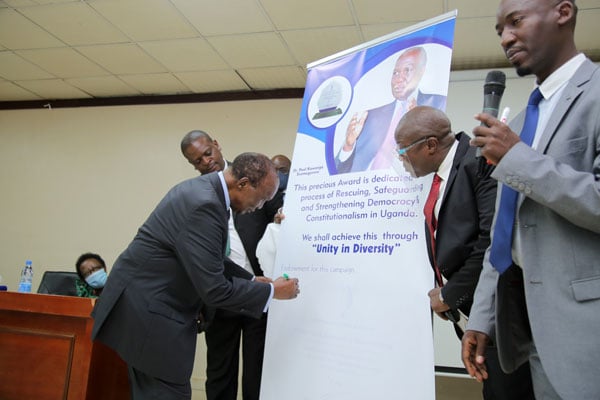Prime
Highs and lows in Ssemogerere’s 60-year political journey

Veteran politician Paul Kawanga Ssemogerere
What you need to know:
- Veteran politician Paul Kawanga Ssemogerere, who passed on Friday, has been lionised a champion for good governance, but Derrick Kiyonga writes that his decision to work with a number of governments and hanging onto power in the Democratic Party (DP) greatly weakened the party to the point that those who he mentored had to quit the party.
At 90 years, Paul Kawanga Ssemogerere, it has emerged, was trying to forge a political project within the Opposition proponents called unity in diversity.
Politicians who have talked about Ssemogerere’s last political project are largely from Forum for Democratic Change (FDC) and National Unity Platform (NUP). Erias Lukwago, the FDC vice president in charge of Buganda region, in his eulogy painted a picture of what Ssemogerere was up to lately.
“I had a productive engagement with him a couple of days ago on the current national crisis and the political trajectory of the country,” Lukwago, who is also the Kampala Lord Mayor, said. “He tasked me with lots of assignments and I undertook to deliver a concrete report in the course of this week. Of late, he has intensely and passionately engaged some of us on the unity in diversity agenda he has been vigorously championing and pursuing.”
The details of Ssemogerere’s last political push are not yet known, but on the face it seems he was trying to unite the Opposition, mainly FDC and NUP with the view to ousting the ruling National Resistance Movement (NRM).
“We have been having meetings at his home to try and see how we in Opposition can work without fights,” said Samuel Muyizzi Mulindwa, a member of NUP, the Opposition’s biggest party in Parliament.
The attachment Lukwago and Muyizzi have with Ssemogerere is clear; they were initiated into Opposition politics when Ssemogerere was the president general of the Democratic Party (DP), a position he held for close to 25 years.
Four months before he could meet his waterloo, Ssemogerere saw DP under the leadership of Nobert Mao plunge the party into more disarray by signing a memorandum of understanding with President Museveni, who has been in power since 1986.
Though Mao framed the deal he signed with Museveni at State House as a way of getting the much-needed transition, it is not clear which deliverables the country will get from the deal besides Mao getting himself a ministerial position and his secretary general Gerald Siranda scoping a position in the East African Legislative Assembly.
Ssemogerere, at least publicly, didn’t make his views known about the Museveni-Mao deal, but the idea that even in his meetings Ssemogerere was largely dealing with politicians who had left DP for greener pastures is indicative of what has become of a political party which was formed just before Uganda got independence, with many of its members being Catholic liberal democrats.
Though it is now on the periphery of Uganda’s politics, DP started off well when it won Uganda’s 1961 election – thanks in part to Buganda’s decision to boycott the elections for fear that national independence that DP was pursuing would challenge the kingdom’s regional autonomy.
In consequence, Benedicto Kiwanuka, one of the founders of DP, became Uganda’s first prime minister and this only ended 1962 when Uganda Peoples Congress (UPC), led by Apollo Milton Obote and Kabaka Yekka (KY) – a Ganda pro-monarchist party— entered an alliance of convenience.
“In the parliamentary election of April 1962, UPC-KY coalition secured control of the government. The arrangement was electorally partitioned: UPC stood for all of the seats outside of Buganda; KY for those exclusively in Buganda. Benedicto Kiwanuka and DP vacated their short-lived tenure following electoral defeat. Uganda’s government would be controlled by a coalition government between UPC, led by the northern, republican statesman Milton Obote, and KY, whose membership backed the southern, monarchical presidency of Sir Edward Muteesa II, the king of Buganda and first president of Uganda,” writes Jonathan Earle in his book Contesting Catholics: Benedicto Kiwanuka and the birth of pre-colonial Uganda.
READ MORE ABOUT SSEMOGERERE:
Kiwanuka was incarcerated by Obote in 1969, but he was released in 1970 when Idi Amin took power and he was appointed Chief Justice in 1972.
In 1972, Kiwanuka disappeared from his High Court chambers never to be seen again, giving way for Ssemogerere to take over as DP president general. Ever since he took the reins of DP, Ssemogerere tended to still go into marriages of convenience, with many praising his approach as a sign of statesmanship.
“Uganda’s leading icon of struggle for democracy and good governance has gone to rest! Never rested; never got discouraged; never got bitter; never lost his gentle smile,” Dr Kizza Besigye, the Opposition behemoth, who took over the role of leading the Opposition from Ssemogerere in the early 2000s, said.
However, some argue that Ssemogerere’s move to work within settings he had no control over bordered on naivety and it lessened the chances of DP ever taking power.

Former DP leader Benedicto Kiwanuka (C), his wife Maxencia Zalwango (L) and personal assistant Paul Ssemogerere. PHOTO/FILE
When Amin carried out a coup, Ssemogerere was among many Ugandans who fled to exile in Tanzania and he was part of the Moshi Conference which was convened in March 1979 at the behest of Julius Nyerere, then Tanzanian president, who organised all rebel and political groups that were fighting Amin using Tanzania as their rear.
Ssemogerere, who would be appointed minister of labour in the Uganda National Liberation Front (UNLF) government that was a key outcome of the Moshi Conference, later told this newspaper that the essence of the conference was to have a democratic Uganda.
“In Moshi, we had agreed on a transitional period so that we would organise a free and fair election in accordance with the wishes of the people. We looked at 1980 as an opportunity to produce a government that was based on the will of the people,” Ssemogerere told Sunday Monitor in an interview published in September 2014.
It would have been hard to believe that the Moshi Conference would result in running Uganda on democratic principles since the largest Ugandan armed exile group, Kikosi Maluum, under the leadership of Col Tito Okello and Lt Col David Oyite-Ojok, was devoted to and principally patronised by Obote.
Even before the Moshi Conference could end, a number of voices were accusing Obote, who was Nyerere’s staunch ally, of cooking many of the 22 exile groups at Moshi in an effort to gain extra votes and make it possible for Obote to be elected president of UNLF.
The belief that UNLF would deliver free and fair elections turned out to be a mirage as fights occurred even before elections were organised, with Yusuf Lule not lasting more than 68 days, the shortest tenure of any president of Uganda, and his successor Godfrey Binaisa, not spending more than 11 months in the highest office of the land.
Once the army ousted Binaisa, a six-member Military Commission led by Obote’s stooges, Paulo Muwanga and Oyite-Ojok, and Museveni took over and it was charged with organising 1980 elections.
The 1980 elections that saw Obote return to power were widely discredited as rigged. Museveni –who had lost to Sam Kutesa in the Mbarara North (currently Nyabushozi County) seat and his party Uganda Patriotic Movement (UPM) only getting one seat in parliament – declared a guerrilla war which he waged using Ssemogerere’s stronghold of Buganda, as his base.
On the other hand, Ssemogerere, whose party DP was claimed to have been rigged, stuck to his pacifist stance and took a seat in Parliament as Leader of Opposition.
“Yes, we took up our seats in Parliament and I have been vindicated. First of all, it was a hard decision to take but it was taken democratically. In my conscience, I had to mull that question. Should we boycott Parliament, should we join? If we boycott, what do we do?” Ssemogerere said in the Monitor interview.
“There were very strong voices for boycotting Parliament, and very strong voices for going to the bush. We thought that we had a special role to promote reconciliation and national unity at that very difficult period in our history. We thought that was better for the country.”
Yet when Museveni with his National Resistance Army (NRA) emerged victorious, Ssemogerere was quick to join the so-called broad-based government. The guerrillas showed from the very start that their belief in democracy was non-existent when they banned political parties upon reaching Kampala.
“The anti-party stance espoused by Museveni during the guerrilla war did not remain a mere rhetorical strategy, but quickly translated into a far-reaching state policy. As the guerrillas entered Kampala in 1986, the first legal act of the NRM era was an immediate ban on political parties. While the ban also responded to concerns about the actual support enjoyed by NRM, the ideological underpinnings of no-party politics were provided by an interpretation of Uganda’s post-independence history as a spiral of violent conflicts prompted by ethnically-based political parties. The bulk of Museveni’s argument for a no-party model was that Western representative democracy could hardly be imported to African countries,” writes Giovanni Carbone in his paper Populism Visits Africa: The Case of Yoweri Museveni and No-Party Democracy in Uganda.
In the broad-based government, Ssemogerere served as first minister for Internal Affairs and later as minister Foreign Affairs, but to some putting in place such an arrangement that saw a number of would-be Opposition leaders take up ministerial positions was one of the ways Museveni used to weaken traditional parties such as DP and UPC.
“Ugandans had since the struggle for independence subscribed to two major political parties; UPC and DP. Despite having a countrywide appeal, the two parties were sectarian in nature. Therefore, for Museveni’s NRM to penetrate the Ugandan political scene, it was imperative to weaken the influence of the two sectarian parties,” Prof William Muhumuza, senior lecturer of Political Science at Makerere university, says.

Democratic Party presidential Paul Kawanga Ssemogerere (right, next to car) campaigns in Hoima District during the 1996 General Election. PHOTOS/ FILE
“This was effectively done through RCs [Resistance Councils], which were popular, participatory and non-sectarian. RCs attracted tremendous popular support because they were viewed as a uniting factor in a nation torn by many years of social divisions and strife.”
Within the broad-based government, it was clear that Ssemogerere had no powers, but still it took him until mid-1990s to walk away as Ugandans were preparing for the 1996 general election.
“When he was minister of Internal Affairs, Dr Besigye, who was the junior minister, had more powers because he [Besigye] was a Bush War veteran and Ssemogerere was considered as an outsider,” a source familiar with Dr Besigye says, a narrative that was alluded to by Dr Besigye in his 1999 dossier that he used to break ranks with the NRM.
“They created a distinction between government leaders as ‘NRM’, and ‘broad-based,’” Dr Besigye said. “If you were referred to as ‘broad-based’, it was another way of saying that you were undeserving of your post, or that you were possibly an enemy agent (fifth columnist).”
When he didn’t win the presidency in 1996, Ssemogerere joined the Opposition but still refused the idea of organising elections within DP on grounds that at that time Uganda was under the so-called movement system (single party) which didn’t allow other political parties to operate.
Ssemogerere’s stance sparked off divisions within DP, with Francis Bwengye emerging as an alternative voice who had the desire to run DP structurally. In fact, Ugandans were preparing for 2001 elections when Bwengye presented himself as the DP candidate.
“My candidature is automatic as DP leader. We’re going to cause fundamental changes in the party. You will see fireworks,” Bwengye said in 2000.
Bwengye’s accusation against Ssemogerere wasn’t new: he said the veteran politician had failed to catapult the party to state power.
“How can your enemy talk the language of fire and you talk the language of water? A thorn is removed by a thorn. Ssemogerere has failed to mobilise the party since 1996 when he last toured the country. We have visited all the districts. DP is now on fire,” Bwengye said.
“We are not going to sleep. We are going to mobilise people against the Movement government. Museveni has overstayed in power and he is turning it into a dynasty. When I say I am going to mobilise people, Museveni knows what I mean.”
Of course, Bwengye didn’t defeat Museveni and Ssemogerere only handed over DP leadership to John Ssebaana Kizito, a former member of the broad-based government, in 2005 after a referendum that saw the return of multiparty politics.
That didn’t cure wrangles within DP as Mao, who Ssebaana defeated to become president general, characterised the whole exercise as “Ganda affair “and the party has since stumbled from one crisis to another to the point of going back to signing deals with Museveni.





